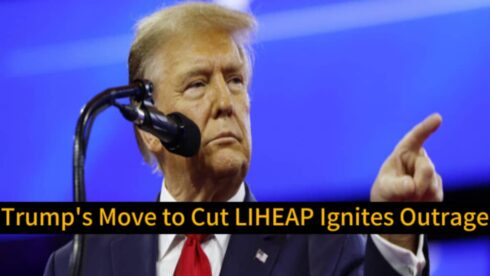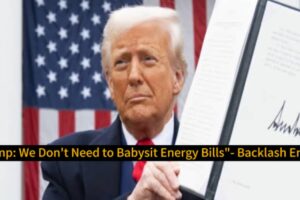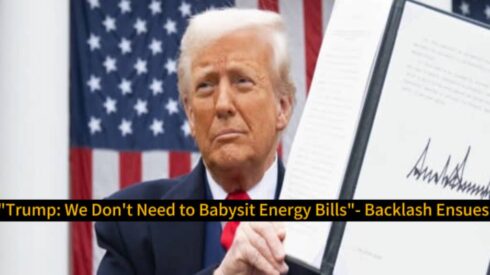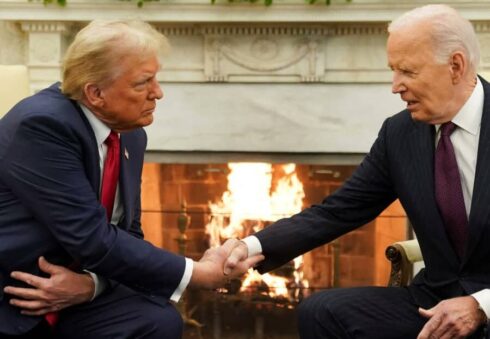Donald Trump has reignited outrage after unveiling a controversial proposal to slash funding for the Low Income Home Energy Assistance Program (LIHEAP) — a federal initiative that helps millions of Americans afford heating during brutal winter months. In a budget outline that critics call “socially reckless,” Donald Trump’s team justified the move by branding LIHEAP as “inefficient and outdated,” despite record-high utility bills and rising cold-related fatalities.
The move comes as the country braces for what meteorologists predict will be one of the harshest winters in decades. With energy costs skyrocketing and inflation still biting, the program is a vital survival mechanism for over 6 million Americans annually — many of them elderly, disabled, or raising young children. Trump’s proposal has triggered alarms across advocacy groups, state governments, and even some Republicans who fear political backlash in swing states.
Donald Trump: “We Don’t Need to Babysit Energy Bills” – Backlash Ensues
Donald Trump began his defense of the cuts with his usual bravado: “We don’t need to babysit energy bills. People can figure it out. America needs to toughen up.” But for those who rely on LIHEAP, the reality is far bleaker. In cities like Detroit, Minneapolis, and Buffalo, where temperatures plunge below zero, LIHEAP is often the only reason families don’t resort to burning furniture or sleeping in cars to survive.
The backlash has been swift and intense. Critics argue that this isn’t about fiscal conservatism but about cruelty disguised as budgetary discipline. Medical experts point out that cold-related illnesses and deaths — from hypothermia to heart strain — disproportionately affect low-income families, and gutting this program is akin to signing death warrants for thousands.
State Governments Sound the Alarm: “We Can’t Cover This Hole”
State officials from both parties have issued urgent statements warning that they cannot absorb the void LIHEAP’s elimination would leave behind. “We don’t have the resources or infrastructure to fill this gap,” said Michigan Governor Alina Rhodes. “This isn’t just irresponsible — it’s dangerous.” States typically receive federal block grants to distribute energy aid, and cutting them mid-crisis could destabilize local economies and emergency services.
Governors in northern and midwestern states argue that they are already overstretched dealing with climate-related emergencies and economic recovery. Donald Trump’s plan, if enacted, would shift the financial burden onto local communities least capable of handling it, especially as they contend with aging infrastructure and deepening wealth divides.
Energy Industry Quietly Applauds – “More Bills, More Profits”

Behind closed doors, energy conglomerates are reportedly pleased with Donald Trump’s move, seeing it as a green light to continue price hikes without federal constraints. “LIHEAP puts pressure on energy companies to justify pricing,” says Dr. Maya Rittman, an energy policy analyst. “With fewer subsidies, customers are trapped in a game of survival — and corporations win.”
In a leaked memo allegedly from a lobbying firm tied to major energy suppliers, the LIHEAP cuts were described as “an overdue deregulation that removes artificial interference in energy market flow.” Trump’s cozy relationship with oil, gas, and utility executives — many of whom donated heavily to his 2024 campaign — casts a long shadow over the motivations behind this policy shift.
A Calculated Political Gamble – But at What Cost?
Donald Trump’s play is being interpreted as a calculated political gamble aimed at appealing to his libertarian base and fiscal hardliners. His strategy? Position himself as the anti-“welfare state” warrior ahead of the 2026 midterms. But experts warn that such a gamble risks alienating suburban voters and seniors — two demographics who have shown increasing reliance on social safety nets like LIHEAP.
Polls taken in response to the proposal reveal that even in traditionally red districts, 61% of voters oppose the plan, citing “inhumane consequences.” For many families, this program isn’t a luxury but a life-or-death necessity. By making it a budgetary casualty,Donald Trump may be creating political enemies in places he once counted as strongholds.
Lives in the Balance: “Winter Will Decide Who Survives”
Human rights groups and medical coalitions have issued dire warnings that the elimination of LIHEAP could directly lead to an increase in winter deaths. “This is not an abstract policy debate — this is about bodies in morgues,” said Dr. Liam Olufemi, head of the National Cold Safety Council. “Without heat, the human body can’t survive long. We’re sentencing people to death by exposure.”
As the legislative battle looms, grassroots mobilization is ramping up, with protests planned across major cities and hashtags like #HeatIsAHumanRight trending online. For Trump, the fallout from this decision may extend beyond the political into the moral and humanitarian. In a country that can afford billion-dollar bailouts and defense budgets, many now ask: Why can’t it afford to keep its poorest citizens warm?














